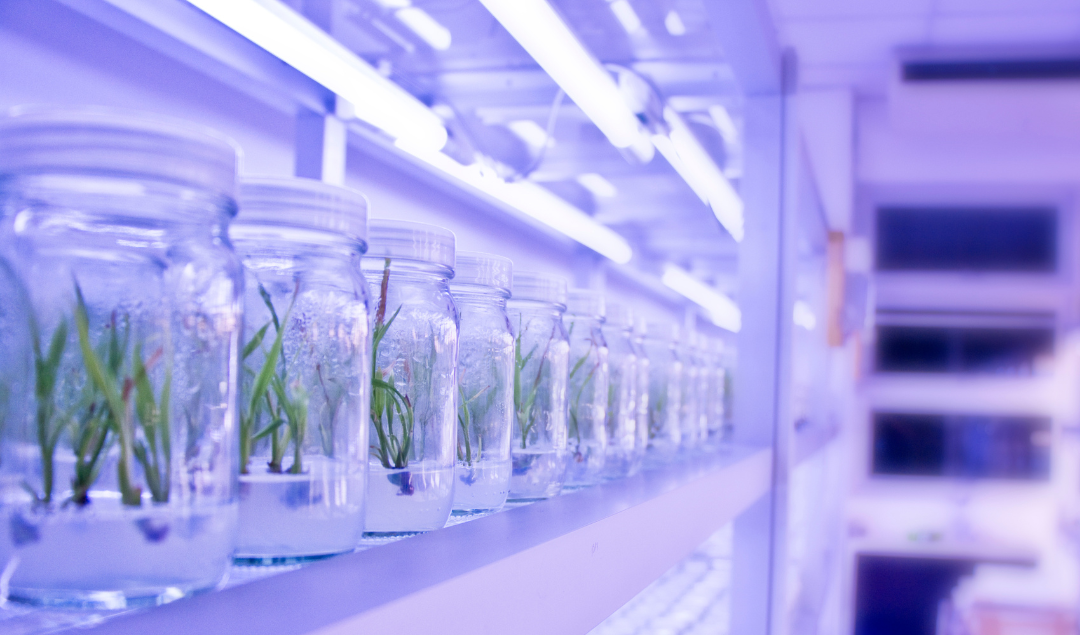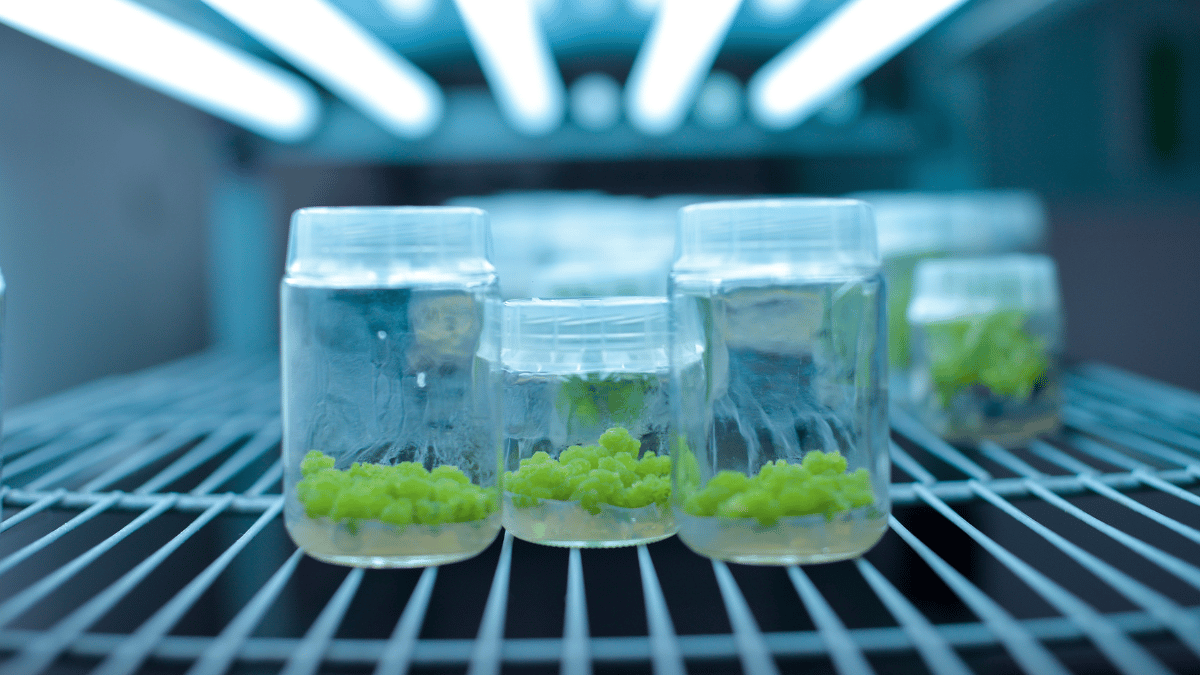
Why Is It Necessary For Plant Tissue Cultures To Be Sterile?
As a content and community manager, I leverage my expertise in plant biotechnology, passion for tissue culture, and writing skills to create compelling articles, simplifying intricate scientific concepts, and address your inquiries. As a dedicated science communicator, I strive to spark curiosity and foster a love for science in my audience.


Introduction
“The foundation of tissue culture is the sterile environment.”
This statement is often echoed among culturists, but have you considered why sterility is so crucial in tissue culture?
Before we delve into the reasons, let’s first understand the tissue culture process.
Tissue culture is an advanced technique of plant propagation that culturists use to produce disease-free plants on a large scale. It involves isolating plant cells, tissues, or organs, sterilizing them, and then cultivating them on nutrient media under sterile conditions.
This technique is pivotal in plant propagation, genetic modification, conservation of rare species, and production of uniform, disease-free plants. It’s invaluable for researchers studying plant growth, development, and responses in a controlled setting.
In this article, we will review the importance of sterility in tissue culture, how to maintain a sterile environment, and the role of PPM™ in safeguarding your culture from contamination.

Why Is an Aseptic Environment Crucial in Tissue Culture?
Success in tissue culture hinges on maintaining a sterile environment. Contamination can ruin your plant tissues, leaving you with no plants and no return on investment.
You must understand that in the natural environment, plants have evolved intricate defense mechanisms to combat various contaminants and pathogens, ensuring their survival. These defenses include physical barriers, chemical compounds, and specialized cells that actively resist infections. However, when plant tissues are introduced into a controlled environment like tissue culture on an artificial media, these defense mechanisms are compromised.
While this medium supports their growth and development, it lacks the complex interactions with soil microorganisms and other environmental factors that trigger the plant's natural defense responses. As a result, the cultured plant tissues become susceptible to contamination by bacteria, fungi, and other microorganisms.
Without the natural defense mechanisms in place, these contaminants can rapidly multiply and infect the plant tissues, leading to various issues such as tissue browning, necrosis, and reduced growth rates. To prevent such contamination and ensure the successful propagation of plant tissues in vitro, maintaining strict sterile conditions is crucial.
Sterile techniques, including sterilizing tools and culture media, are employed to create a controlled environment free from contaminants. These precautions are essential to safeguard the integrity of the tissue cultures, allowing researchers and horticulturists to manipulate plant cells effectively for research, breeding, and conservation purposes.
All other reasons for maintaining a strict sterile environment are related to obtaining clean and healthy cultures eventually, such as:
- Sterile conditions are essential for conducting accurate scientific research. Contaminants can introduce variables that may skew research results, making it difficult to draw reliable conclusions.
- Sterile condition offers you more number of healthy plants at a commercial scale and a profitable return on your investment in the technique.
- Sterility ensures the genetic purity of cultured plants. Without contamination, scientists can be certain that observed traits and characteristics are inherent to the plant's genetic makeup and not influenced by external factors.

How To Maintain a Sterile Environment?
Maintaining a sterile environment in plant tissue culture is critical to prevent contamination and ensure the successful growth and development of plant cells in vitro. Here are key steps and practices to maintain sterility:
- Proper Lab Setup: Designate a specific area within the laboratory for tissue culture work. This area should have limited access, controlled airflow, and positive pressure to prevent external contaminants from entering the culture room.
- Protective measures are crucial: Consider the possibility of self-contamination due to the bacteria naturally present on your skin. Wearing gloves and a lab coat is essential. Store your lab coat in the designated area within the lab and clean it regularly. Prepare a checklist of items required for the facility room to streamline your experiments and ensure efficiency.
- Sterilization of Tools and Equipment: All tools, including scalpels, forceps, and glassware, must be sterilized before use. This can be achieved through autoclaving (using high-pressure steam) or by soaking them in disinfectants like ethanol or bleach. Flame sterilization can also be employed for metal tools.
- Sterilization of Culture Media: Prepare culture media using distilled or deionized water. Heat the media to dissolve components, and then autoclave it to sterilize. After autoclaving, media should be cooled to an appropriate temperature before use.
- Sterile Workspace: Use a laminar flow hood or a biosafety cabinet to provide a continuous flow of filtered, sterile air over the work area. This prevents airborne contaminants from settling into the cultures.
- Careful Handling: Avoid unnecessary movements and disturbances in the tissue culture area. Work methodically and minimize the opening of containers to reduce the risk of airborne contaminants entering.
- Isolation of Cultures: Keep different plant species or cell lines isolated from each other to prevent cross-contamination. Use separate equipment and workspace for different cultures.
- Monitoring and Documentation: Regularly monitor cultures for signs of contamination, such as discoloration or unusual growth. Contaminated cultures should be isolated and discarded properly. Maintain detailed records of all procedures and observations.

How Does PPM™ Combat Contamination?
While following the mentioned steps can often salvage your culture, achieving precision and consistency with the recommended 'best practices' remains challenging. In such conditions, many culturists try antibiotics in their cultures. However, it can only help mitigate contamination to some extent. Bacteria's growing resistance to antibiotics diminishes their effectiveness in preventing biological contamination. Further, the use of antibiotics also affects tissue culture plants’ growth and development.
PPM™ (Plant Preservative Mixture) is a solution designed to protect against all forms of contamination. It’s more effective than antibiotics, which can be less reliable due to bacterial resistance. PPM™ is heat-stable and cost-effective, offering protection without affecting plant growth. To use PPM™, add it to your culture media before autoclaving.
Even with PPM™, maintaining strict sterility is essential.
The advantages of incorporating PPM™ into tissue culture encompass:
- Preservation of in vitro seed germination, callus proliferation, and callus regeneration without interference.
- Inhibition of the germination of bacterial and fungal spores.
- Ability to withstand autoclaving along with the culture media due to its heat stability.
- Cost-effectiveness when compared to frequently used antibiotics.
- Economical usage at a dosage of just 1-2ml per liter of media, with the concentration adjusted according to the specific contamination issue's type and intensity.
Using PPM™ is a simple process. Just add 1-2 ml/L PPM™ (or less/more based on the plant tissue you are working with and the level of contamination) to your culture media and autoclave it for sterilization. Once sterilized, transfer the media to a culture vessel, cultivate your plants, and place the cultures in appropriate conditions. PPM™ will effectively safeguard your plants from contaminants. However, it's crucial to maintain utmost sterility despite using PPM™ in all instances.
How Does Plant Cell Technology Help in Your Tissue Culture Journey?

Plant Cell Technology is revolutionizing tissue culture practices globally by providing exceptional products and services tailored to streamline your processes. Our range includes MS media, agar, gellan gum, Plant Preservative Mixture (PPM™), culture vessels, Biocoupler™, and masks, all designed to enhance your workflow.
But that's not all! We also offer consulting services to cultivators of all scales, providing instant solutions to your tissue culture challenges.
Occasionally, we also bring you comprehensive master classes led by tissue culture experts, who have 15-30 years of experience in the field. The two most frequently conducted classes include the Cannabis tissue culture master class and the Houseplant and Carnivorous plant tissue culture master class.
Interested in learning more about our master classes and joining your favorite one? Visit this link now!
Explore www.plantcelltechnology.com today to learn more about our products and services, empowering you to excel in your tissue culture endeavors.
Happy Culturing!
Blog Categories
View by Level
Popular Blogs

Callus Culture: Definition and Applications
Introduction Tissue culture is not just one technique! Yes, you heard right! As you know, tissue culture is an advanced...
Read More
6 Plant Tissue Culture Books to Keep Learning
Introduction Most of us are fans of books when it comes to learning a topic in detail and in a...
Read MoreSubscribe to Our Newsletter








Join the conversation
Your email address will not be published. Required fields are marked